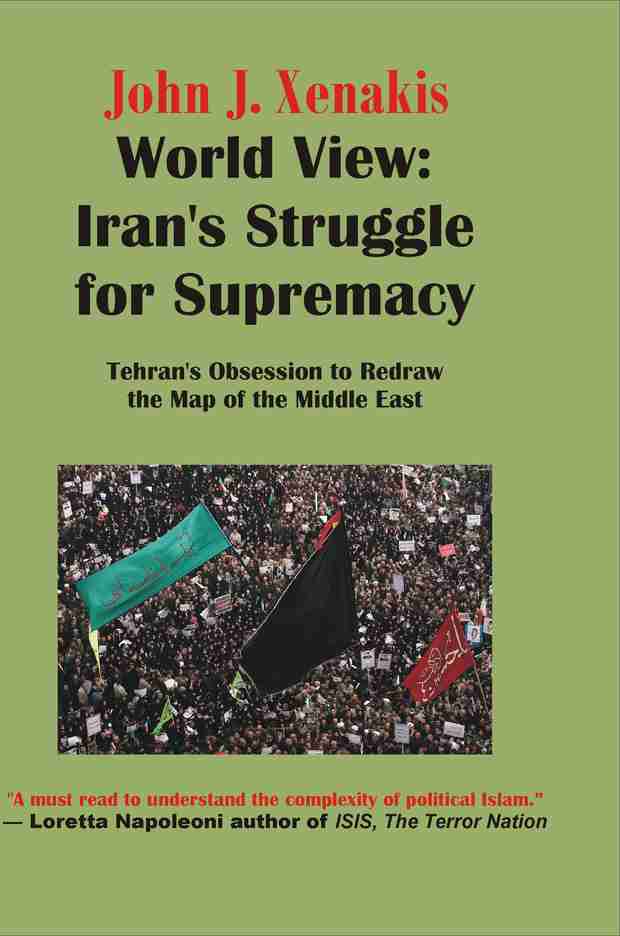
Dynamics

|
Generational Dynamics |
| Modern Generational Theory | |
| HOME WEB LOG COUNTRY STUDIES COMMENT FORUM | |
| DOWNLOADS FOURTH TURNING ARCHIVE ABOUT | |
 |
Table of Contents
Part I. Introduction Chapter 1. Justification for this book Chapter 2. Fact-checking this book
Part II. Iran today and its internal conflicts Chapter 3. Student protests of 1999 Chapter 4. More protests during the generational awakening of Iran's college students Chapter 5. The 2009 election and the Green movement
Part III. Iran in the 19th-20th centuries Chapter 6. Iran in the 1800s Chapter 7. History of Constitutions Chapter 8. Concessions, Capitulations and the Tobacco Revolt (1890-92) 8.1. The Capitulatory System of the Middle East (1500s-1900s) 8.2. The Tobacco Revolt (1890-92) Chapter 9. Iran's Constitutional Revolution (1905-09) Chapter 10. Iran after the Constitutional Revolution (1909-53) 10.1. Iran during World War I 10.2. Iran during World War II 10.3. Anglo-Iranian Oil company nationalized, and 1953 CIA coup Chapter 11. The White Revolution (June 1963) and approach to 1979 revolution 11.1. The White Revolution (June 1963) vs the Tobacco Revolt (1890) 11.2. Prelude to the 1979 Great Islamic Revolution
Part IV. The Great Islamic Revolution (1979-present) Chapter 12. The rise of Ayatollah Ruhollah Khomeini Chapter 13. The 'causes' of the Great Islamic Revolution Chapter 14. The excuses for the Great Islamic Revolution Chapter 15. Khomeini's great massacre of 1988 Chapter 16. Iranian hostage crisis
Part V. Pre-Islamic Persian empires Chapter 17. The cycles of history Chapter 18. Summary of pre-Islamic Persian empires Chapter 19. Persian history -- early dynasties Chapter 20. Cyrus the Great and the Achaemenid Persian empire (550-331 BC) Chapter 21. Alexander the Great and the Seleucid Empire (323-150 BC) Chapter 22. The Arsacids and the Parthian Empire (247 BC-226 AD). 22.1. Arsaces I conquest of Parthia (247 BC) 22.2. Roman-Parthian Wars (53 BC - 217 AD) Chapter 23. The Sassanid Empire (226-651 AD)
Part VI. Persian history after the conquest by Islamic Arabs Chapter 24. The fall of the Sassanian Empire to the Islamic Arabs (630-651) 24.1. The war between the Sassanians and the Byzantines 24.2. The last Sassanian king, Yazdgird III 24.3. The Caliphs versus the Imams 24.4. The first Shia Imam: Ali Ibn Abi Talib (601-661) 24.5. The Hashim clan versus the Umayya clan 24.6. Ali becomes Caliph (656): Partisans of Ali = Shiat Ali = Shia 24.7. The Battle of Siffin (657) and the Kharijites and 'infidel' concept 24.8. Abdullah ibn Saba and the alleged Jewish origins of Shia Islam 24.9. Shia-Sunni clashes become vicious after Ali is assasinated (661) Chapter 25. Battle of Karbala (October 10, 680) and beheading of al-Husayn 25.1. Prelude to the Battle of Karbala 25.2. The Battle of Karbala 25.3. Aftermath and the commemoration of Ashura 25.4. Hussaini Brahmans - the link between Shia Muslims and Hindus Chapter 26. Expansion of the Islamic empire 26.1. Birth and death of empires -- the cycles of history 26.2. Zaydi Shia Muslims 26.3. The Battle of Zab (750) and the Abbasids 26.4. The Banquet of Blood (750) 26.5. The Abbasid Dynasty (750-1258)
Part VII. The Koran and Sharia (Islamic) law Chapter 27. Development of Sharia law following Mohammed's death Chapter 28. Roman Law versus Sharia (Islamic) law: The role of the Jurist Chapter 29. There's no such thing as Sharia law 29.1. Misunderstandings about Sharia law 29.2. Mohammed's wives, and accusations of polygamy and pedophilia Chapter 30. Disputes over the authenticity of the Bible Chapter 31. Brief summary of the Koran 31.1. Money lending 31.2. Verses about marriage, divorce, dower, conjugal life, family disputes 31.3. Koran verses about inheritance 31.4. The Koran on civil war among the faithful 31.5. Koran on business dealings and transactions 31.6. Koran on theft: cut off their hands 31.7. The Koran on fornication or obscene acts Chapter 32. Disputes over the authenticity of the Koran Chapter 33. Violence in the Koran: The sword-verses 33.1. The empirical evidence -- Muslim nations governed by Sharia law 33.2. The empirical evidence -- Muslim wars of invasion 33.3. The empirical evidence -- Muslim populations involved in civil wars 33.4. The empirical evidence -- Extremist jihadists referencing Sharia law 33.5. The 'Sword-Verses' of the Koran and the Jizya 33.6. Comparison of the Koran's sword-verses to the Bible's Old Testament 33.7. Comparisons of Jesus to Mohammed Chapter 34. Disputes over the authenticity of the Sunnah and Hadith Chapter 35. There's no such thing as Sharia law - again Chapter 36. Brief history of Catholic and Orthodox Christian 'Ecumenical' Councils 36.1. The Ecumenical Councils 36.2. The Seventh Ecumenical Council (787) - iconoclasts and iconophiles 36.3. The Catholic vs Orthodox Christian schism (1054) 36.4. Universal versus regional religions Chapter 37. Blasphemy and violence in Islam 37.1. Blasphemy laws in the UK and Ireland 37.2. The 2015 Paris Charlie Hebdo terrorist attacks 37.3. Iran's death fatwa against Salman Rushdie and 'Satanic Verses'
Part VIII. Shia Islam Theology Chapter 38. The twelve infallible Imams 38.1. The Sunni-Shia theological split 38.2. Fivers, Seveners and Twelvers Chapter 39. The disappearance of al-Mahdi and the rise of the Shia jurists 39.1. The Occultation -- the disappearance of the 12th Imam (940 AD) 39.2. The rise of Shia jurists and Shia jurisprudence 39.3. Sheikh Morteza Ansari and the Tobacco Revolt 39.4. Shia jurisprudence and the Constitutional Revolution 39.5. Theory of Wilayat al-Faqih (Guardianship of the Jurist)
Part IX. Shia theology in practice under Khomeini Chapter 40. Wilayat al-Faqih in practice 40.1. Divine guidance vs popular will 40.2. The third way: Corruption 40.3. The missing checks and balances 40.4. The Principlists versus the Reformists Chapter 41. The Future of Iran 41.1. December 2017 protests - challenge to Supreme Leader's legitimacy 41.2. Replacing the Constitution 41.3. Selecting a successor to Supreme Leader Khamenei 41.4. Regime change and generational awakening
Part X. The End Chapter 42. About Generational Theory Chapter 43. About John J. Xenakis Chapter 44. Acknowledgments
Part XI. Footnotes / References